|
 Robert Premier Robert Premier
(MBiotech, MEnvSci, PhD)
Private Consultant
Global F.S. Pty Ltd
(m) 0418 317 786
(e) robert.premier@consultant.com
Expertise:
- Food safety
- Functional foods
- Recycled water quality
Project involvement:
Various HAL, RIRDC, ARC and AusAID and DPI-Vic projects
Food Safety Standards and Labelling for Native Plant Foods
John Faragher and Robert Premier (2008) RIRDC DAV-211A
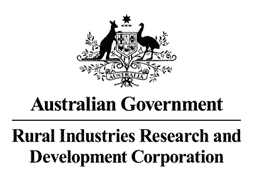 Bush foods are becoming marketable commodities and the industry is in need of labelling and food safety training to succesfully market their products. Bush foods are becoming marketable commodities and the industry is in need of labelling and food safety training to succesfully market their products.
Food safety is of increasing importance to industries like native plant foods, as consumers, buyers and governments demand increased assurance that food is safe.
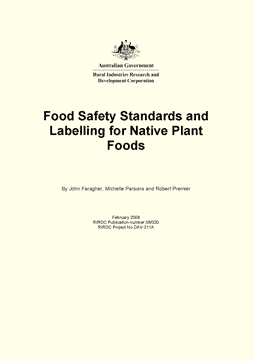 The greatest industry need is for information, advice and assistance to meet the food safety requirements of buyers andlegislation, without it costing too much or taking too much time. The greatest industry need is for information, advice and assistance to meet the food safety requirements of buyers andlegislation, without it costing too much or taking too much time.
There are also ever changing legislative requirements for labelling. In addition, consumers and journalists are questioning the identification of ‘bush foods’.
Labelling can promote the authenticity and value of the product. Good management of food safety and labelling are part of any developing industry’s efforts to assure buyers of quality and to capture sales.
The report identifies food safety issues including biological issues, legislative and buyers’ requirements. It provides practical food safety guidelines and a model food safety program to manage food safety risks.
See Also:
Food safety for native plant foods John Faragher and Robert Premier (2007)
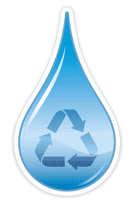
Health risk vegetables irrigated with reclaimed water
Hamilton A., Stagnitti F., Premier R., Boland A. (2006)
The use of reclaimed wastewater for irrigation of horticultural crops is commonplace in many parts of the world and this practice is likely to increase. The risks to human health arising from such practices depend upon:
- the concentration of pathogens in the source water,
- water treatment efficiency,
- volume of water contacting the crop,
- die-off rate of pathogens in the environment.
- amount of food consumed.
See Also:
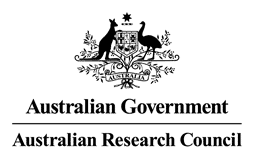 Quantitative microbial risk assessment models for estimating the annual risk of enteric virus infection associated with consuming raw vegetables that have been overhead irrigated with nondisinfected secondary treated reclaimed water were constructed. Quantitative microbial risk assessment models for estimating the annual risk of enteric virus infection associated with consuming raw vegetables that have been overhead irrigated with nondisinfected secondary treated reclaimed water were constructed.
Evaluation included several different scenarios of crop type, viral concentration in effluent, and time since last irrigation event. The mean annual risk of infection was always less for cucumber than for broccoli, cabbage, or lettuce.
Previously published decay coefficients were used to describe the die-off of viruses in the environment. For all combinations of crop type and effluent quality, the annual risks of infection was one infection or less per 10,000 people per year, providing that 14 days had elapsed since irrigation with reclaimed water.
Conversely, when the withholding period was only 1 day, no combination of crop or water quality met the standard.
Practices such as subsurface, furrow, or drip irrigation and postharvest washing/disinfection and food preparation could substantially lower risks and need to be considered in future models, particularly for developed nations where these extra risk reduction measures are more common.
See also:
Phytochemical composition: A paradigm shift for food-health considerations
Robert Premier (2002)
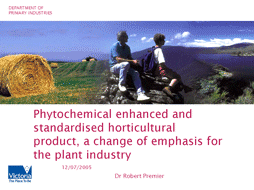 A new wave of research is addressing the newly developing interest in A new wave of research is addressing the newly developing interest in
heath-based foods. Phytochemical-enhanced products such as broccoli, tomato, oranges and berries are currently being evaluated for commercial exploitation.
Over the years, we’ve been told that an apple a day keeps the doctor away and later we heard that drinking green tea was a sure way to ward off illness. Now researchers contend certain ‘functional foods’ eventually could prevent disease and even change gene expression.
Australian scientists are exploring ways to enhance the phytochemical content of vegetable crops such as cabbage, broccoli and mustard greens through cross-breeding, novel harvesting methods and soil additives.
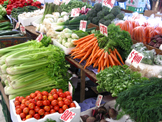 Until recently plant breeders have been selecting varieties with better yield, appearance and taste that are suited to local climates and with improved pest resistance. Until recently plant breeders have been selecting varieties with better yield, appearance and taste that are suited to local climates and with improved pest resistance.
“By 2010 we will have phytochemical-rich horticultural products available,” said Robert Premier, “Initially it will be a curiosity food but it’s likely to become more mainstream,” he said.
See also:
Guidelines for On-farm Food Safety for Fresh Produce 2004
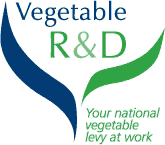 Considerable confusion and uncertainty exists throughout the horticulture industry with regard to some of the technical aspects of on-farm food safety. Considerable confusion and uncertainty exists throughout the horticulture industry with regard to some of the technical aspects of on-farm food safety.
This is exacerbated by the number of food safety/QA standards and audit checklists that growers of fresh produce currently face.
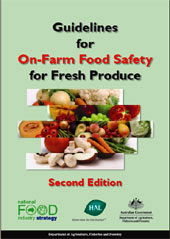 To help achieve greater consistency between on-farm foodsafety programs, To help achieve greater consistency between on-farm foodsafety programs,
the grouppublished ‘Guidelines for On-Farm Food Safety for Fresh Produce’, in 2001.
These Guidelines quickly became a valuable resource for horticulture producers implementing
on-farm food safety programs.
Over the past three years ‘the Guide’ has been widely accepted by horticulture training providers/facilitators, QA scheme owners and major Australian retailers.
To keep the Guidelines relevant and up to date, DAFF and Horticulture Australia Limited convened a panel of experts to produce a revised edition.
This updated edition includes the most recent scientific information including chapters on ‘Assessing the Risk of Contamination’ as well as ‘Testing Information’ (including soil testing).
Food Safety Guide for the Australian Vegetable Industry (2004) – (pdf, 564k)
See also:
AIFST Fresh Produce Food Safety Summit – (April 2007)
 Fresh produce are an essential component of a healthy diet and the fresh produce industry is a vital Fresh produce are an essential component of a healthy diet and the fresh produce industry is a vital
component of Australia’s agriculture. As we strive nationally to increase consumption of produce in
general we have to ensure also that they are as safe as possible with regard to food safety hazards.
This meeting brought together
stakeholders across the fresh produce supply chain along with regulators and scientists. This group discussed
trends in produce related food safety and what actions were needed to ensure our fresh produce is as
safe as possible.
Robert Premier from the Victorian Department of Primary Industries provided an overview of
challenges and emerging knowledge of microbiological hazards and fresh produce. Rob presented
data on the microbiological load on vegetables and the pitfalls of misinterpretation when testing for
bacterial indicators of hygiene and safety if inappropriate tests are performed and inadequate sampling
plans are used.
Dr Premier emphasised, that research has shown that sanitisers are able to
reduce – but not eliminate – bacterial contaminants. The risk of contamination is increased when leafy
vegetables are damaged and the internalisation of bacteria
influences bacterial survival and growth.
Quality Assurance Program in Australia and South Asia – (2005)
 Quality assurance in the horticultural industry has become well established in Australia, on farm HACCP-based plans have been adopted due to pressures from supermarkets and other buyers including fresh markets. Quality assurance in the horticultural industry has become well established in Australia, on farm HACCP-based plans have been adopted due to pressures from supermarkets and other buyers including fresh markets.
Supermarket own systems and more general quality assurance (QA) systems have been used by growers to meet these new requirements. FreshCare, and SQF have been introduced across the country.
A review of QA parameters, such as chemical residues and microbiological contaminants, suggest that these QA systems have achieved some level of assurance.
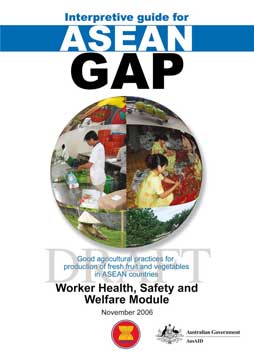 Local pressures, however, are not the only concern when it comes to QA. Iinternational demands for safe quality fruit and vegetables has meant that QA systems now need to be designed to satisfy export requirements. Local pressures, however, are not the only concern when it comes to QA. Iinternational demands for safe quality fruit and vegetables has meant that QA systems now need to be designed to satisfy export requirements.
In addition to food safety, international demands must also address the environment and worker’s health and safety.
Southeast Asian governments have taken the initiative here and have developed country specific QA systems suitable for their farmers to use – these include the SALM system in Malaysia, the Q system in Thailand, IndonGAP system in Indonesia and the newly announced system in the Philippines.
This presentation discusses the status of QA systems in Australia and Southeast Asia, including the pressures behind their establishment, and the major differences between them.
The presentation also covers the attempt by Southeast Asian governments to create a uniform standard through the development of ASEAN GAP, a good agricultural practices standard suitable for use by all 10 ASEAN member countries and the challenge that this standard poses.
See also:
Australian project aids Burmese fruit and vegetable sector
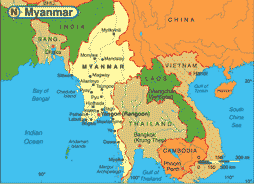 MYANMAR’S participation in a project funded by the Australian government will assist in raising quality standards in the fruit and vegetable sector, a senior government horticulturalist said last week. MYANMAR’S participation in a project funded by the Australian government will assist in raising quality standards in the fruit and vegetable sector, a senior government horticulturalist said last week.
The five-day workshop, attended by 20 government agricultural staff from throughout the country, was presented by the project’s director, Dr Robert Premier, together with another Australian specialist.,
The project was funded by the Australian government aid agency, AusAID, to upgrade quality assurance for fruit and vegetables in four ASEAN countries.
The general manager of the MAS extension division, U Hla Myo, said in a speech at the start of the workshop that farmers, traders and consumers needed to acquire more knowledge about safety and quality for fruit and vegetables, including the hazards posed by the use of chemicals in cultivation and processing. Those who attended the workshop would pass on their knowledge to farmers and traders.
VG 98083 Postharvest bacterial rots and browning in lettuce
Pascoe S., Tomkins B., Premier R. (2002) – final report – extract
Bacterial soft rots of lettuce and salad vegetables are a major problem in Australia.
Severe rots cause direct losses in the field, while mild rots cause storage or processing losses.
-
One particular bacterial group implicated in leetuce browning are
the Fluorescent Pseudomonads which are important for the decomposition of plant waste. 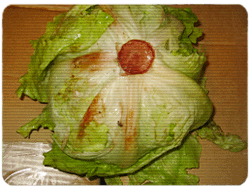
These bacteria are also the cause of several lettuce diseases including Varnish Spot and Bacterial soft rots, in the field and post-harvest storage.
- Fluorescent Pseudomonads live on plant surfaces, in water and in the soil. Numbers are particularly high in soils with fresh or decomposing plant material.
- The bacteria can be spread through splashing water/soil on to crops or by contaminated harvesting equipment (knives).
Damaged plant surfaces or roots often provide a point of entry for the
bacteria to infect the plant.
The
project assessed the number of Pseudomonas bacteria
in lettuce-growing soils and their ability to cause
browning of lettuce in storage.
-
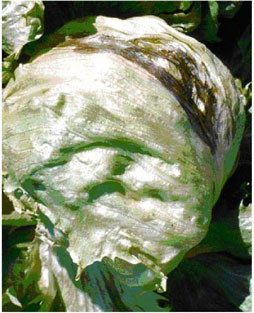 Natural levels of Fluorescent pseudomonad varied with temperature and soil type and were about ten thousand bacteria per gram of soil. Natural levels of Fluorescent pseudomonad varied with temperature and soil type and were about ten thousand bacteria per gram of soil.
-
The number of Fluorescent pseudomonads on freshly buried lettuce leaves quickly increased to around 1 million bacteria per gram of soil for the first 7 days.
Bacterial numbers did not return to natural levels until around day 16.
-
The study suggests you should wait at least 2 weeks after harvest before planting seedlings in the same field.
This will allow naturally high levels of these bacteria to return
to normal levels and reduce the risk of infection.
-
Good cool chain management will also reduce the potential for further
browning and rots to develop in the supply chain.
This project was funded by the Australian Vegetable
Industry Levy
and the Victorian
Department of Primary Industries.
|